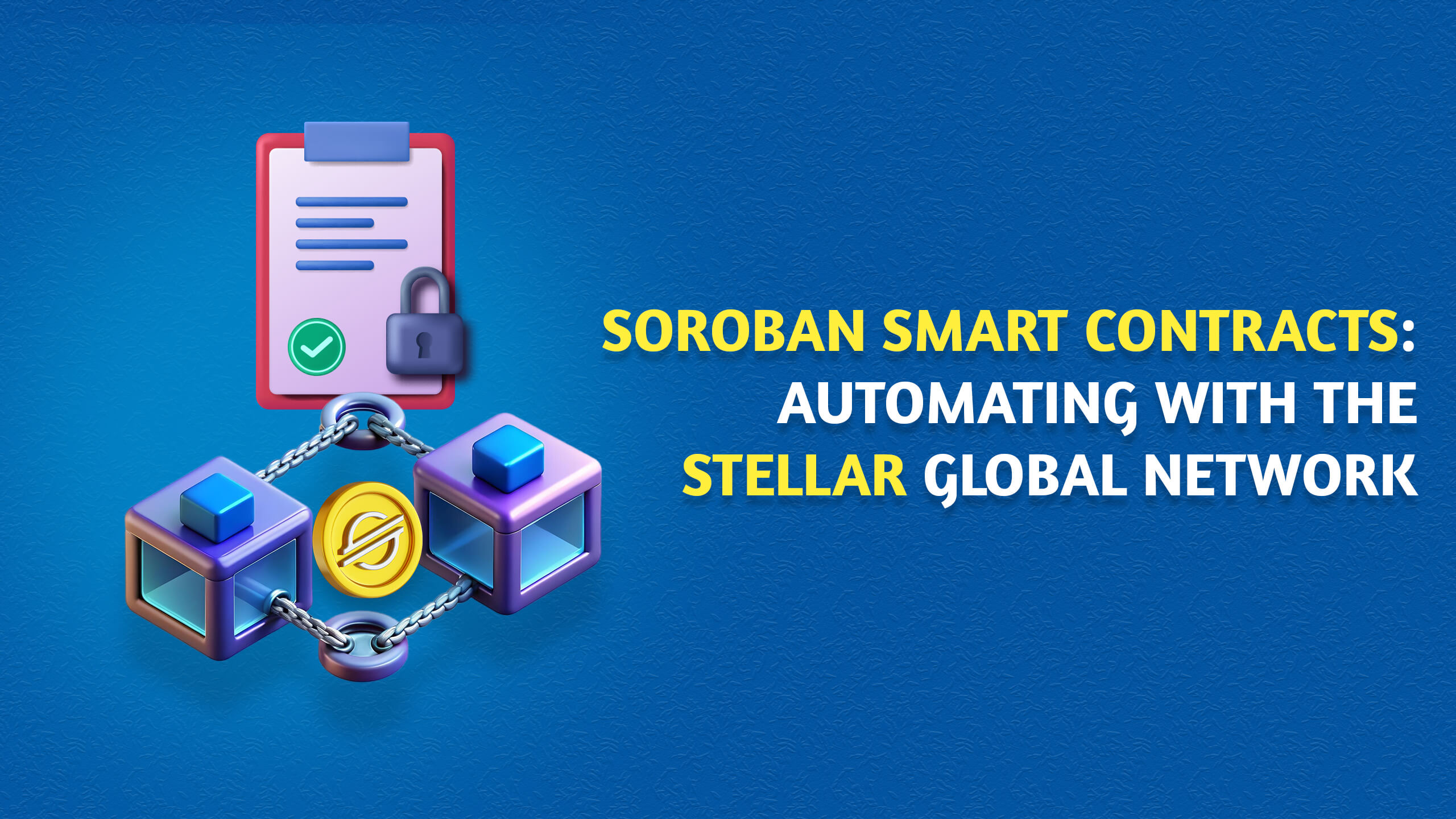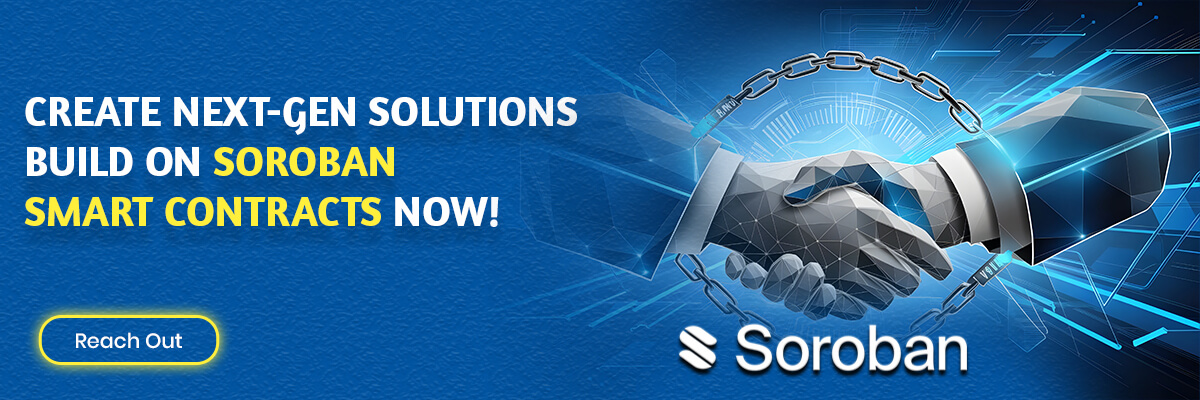In this hypercompetitive market, decentralized networks have made a huge impact on financial operations and trades. Offering users the ability to initiate cross-border transactions and enjoy payments with lightning speed, these platforms have opened a sea of opportunities to use digital tokens. But it is Stellar that has made a groundbreaking revolution through its financial inclusiveness. Supporting both fiat currencies and crypto tokens, it allows users to leverage decentralized blockchain for trading or investing in multiple currency types. Additionally, it works on the FBA paradigm, a new way of consensus that allows every validator node to choose the next set of trustworthy nodes for ledger operations.
But all these features and abilities can be accessed only due to the impeccable Stellar smart contract platform. It allows users to develop and release automatically executable smart contracts for controlling transactions and establishing ground rules. Termed as Soroban, it can be considered as the building block of the Steller blockchain network and its decentralized feature. So, before you even start developing any smart contract specific to the Stellar network, knowing about Soroban, its key features, benefits, and industry use cases is imperative. This being said, let’s not waste anymore time and delve deep into the essentials of Soroban, a smart contract platform that has revolutionized the DeFi market.
Introducing Soroban: Stellar’s Own Smart Contract Platform
If you are familiar with Stellar, you might have heard about Soroban smart contracts. However, having a detailed insight is necessary for you to start with the development projects. It was first included within the network through the Steller Protocol 20 with the goal of elevating and extending the network’s capabilities in supporting financial inclusiveness and borderless transactions. It allows developers to build smart contracts and deploy them to the real-time blockchain network as a part of transaction governance rules.
Soroban runs on two major technologies, namely:
- Rust: This is the base programming language that controls the technical architecture of the smart contract platform. Thanks to its higher efficiency, exceptional speed, and improved credibility, it ensures Soroban remains protected and immune from vulnerabilities and threats.
- WebAssembly or WASM: Used as a runtime environment, it adds versatility to Soroban smart contracts and increases its operational speed. It enables direct communication with the hardware elements and the underlying software architecture, thereby reducing memory space consumption and resource utilization.
Features and Benefits of the Soroban Smart Contract Platform
1. Impeccable Host Environment
Every smart contract platform requires a specific host environment where the contracts can be executed in real-time without any human intervention. In Soroban, the associated host environment offers excellent flexibility to the users for deploying and executing the contracts without having to worry about any significant performance gap. Additionally, it comes with an integrated server load-balancing algorithm which ensures continuous operations without system failures.
2. Transaction Speed
Since Soroban leverages the underlying architecture and network of Stellar itself, transaction speed has been enhanced by several notches. Every transaction initiated using the Stellar smart contract platform requires approximately 5 seconds for process completion, thereby users to complete payments at lightning speed. Additionally, it allows easy and faster execution of bulk transactions simultaneously, thereby eliminating the need of manual process control.
3. Improved Scalability
When this Stellar smart contract platform was first launched, scalability was one of the prime factors that was prioritized. In other words, Soroban allows developers to make runtime changes in the contracts as per the requirements without having to work from scratch. It also provides the ease of multi-core scaling, thereby ensuring developers can easily design smart contracts for bulk transaction execution. What’s more, it comes with a limited number of serialization and deserialization loops, thereby reducing the need for coding and decoding of the smart contracts.
4. Enhanced Transparency and Security
One of the key features of Soroban is its built-in security features that allow end-to-end visibility and data transparency to all the involved validator nodes. It can prevent the most common cyber threats by ensuring end-to-end immutability of the smart contracts and implementation of stringent contract execution conditions and governance rules. Additionally, it leverages the decentralized feature of the Stellar network to provide more security for every transaction initiated using the smart contracts.
5. Optimized Handling of Tokens
Soroban is capable of handling tokens without any manual interference. Developers can design custom smart contracts on this platform and establish strict protocols about the usage of digital tokens, be it for making cross-border payments or opening a trade position. Tokenization allows users to convert any real-world or digital assets into crypto tokens and enter the DeFi market for harnessing the necessary returns.
6. Reentrancy Handling
One of the major features that help Soroban smart contracts stand out amongst all other smart contract platforms is its inherent ability to prevent reentrancy attacks. In other words, smart contract execution can be carried on seamlessly without any other subroutine causing the thread stack to pause and again resume later. Due to this, the security of smart contracts has been enhanced and performance is not compromised by any means.
7. Stellar Integration
The Stellar smart contract platform can be easily integrated with the financial rails available on Stellar. This allows faster deployment of financial products and high-volume applications without any dependency on service-based APIs. Additionally, it also allows developers to leverage the decentralized network of Stellar for executing transactions without requiring any central issuance authority.
Use Cases of The Soroban Smart Contract Platform
Soroban can be used for several purposes, thanks to its seamless integration with the Stellar network. Given its increasing popularity, we have discussed the two major applications of this smart contract platform in the real world.
1. Soroban development can be used to convert gaming assets, credentials, and even certifications to non-fungible tokens or NFTs. All the metadata sets of the NFTs get stored on the blockchain, thereby offering end-to-end immutability and visibility to the validator nodes. Also, it helps in maintaining ownership through tokenization, ensuring users can have absolute control over their assets.
2. With Soroban, it is possible for developers to leverage the decentralized properties of the Stellar network and access different financial products. From tokenization to lending and borrowing, this platform allows different operations to be conducted without the involvement of any third party.
Conclusion
In this article, we have shared the necessary details you need to know to get started with a dev project on Soroban smart contracts. Since its technological architecture is lightweight and efficient, you won’t have to worry about delays in smart contract execution or their security. Besides, every self-executable contract developed adheres to the specific protocols defined in Stellar’s own directory, known as Stellar Ecosystem Protocols. These rules make Soroban more secure and prevent any user from manipulating or forging the contracts.





